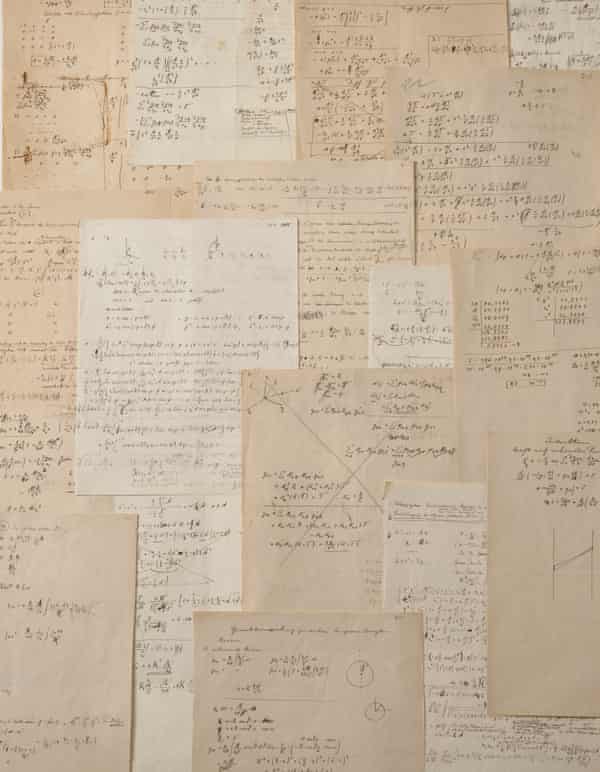Extract from The Guardian
The rare document, which records attempts to explain an anomaly in the orbit of Mercury, is ‘a fascinating dive into the mind of the greatest scientist of the 20th century’

Last modified on Wed 22 Sep 2021 02.01 AEST
A crucial series of Albert Einstein’s calculations, scrawled down as the physicist struggled to account for an anomaly in the orbit of Mercury while developing his theory of general relativity, is set to be auctioned for an eye-watering estimate of up to €3m.
Christie’s France and auction house Aguttes, who will auction the manuscript in Paris on 23 November for an estimate of €2m-€3m, said it documents a crucial stage in the development of the theory of general relativity, and is “without doubt the most valuable Einstein manuscript ever offered at auction”.
Written between June 1913 and early 1914 by Einstein and his friend and collaborator Michele Besso, the Swiss engineer, the manuscript runs to 54 pages, 26 pages in Einstein’s hand and 25 in Besso’s, with three pages written on by both. Covered in equations and calculations, with extensive corrections and crossings-out, it sees the pair tackling the anomaly in the orbit of the planet Mercury, a problem that had bedeviled the scientific community for decades, using the early version of the field equations of Einstein’s general theory of relativity.

Pages of Einstein’s calculations will go on auction in November. Photograph: Christie's Images Ltd
The point in Mercury’s orbit in which the planet is closest to the sun, its perihelion, shifts slowly over time because of the effect of other bodies in the solar system. If Einstein and Besso’s equations had given the result of the observed shift, the theory would be proved. But the manuscript contained calculation errors – Einstein made a mistake in the value of the mass of the sun on page 28. He set this approach to general relativity aside later in 1913, concerned about its theoretical consistency.
Besso took the manuscript with him when he left Zurich. “It is thanks to him that the manuscript has, almost miraculously, come down to us: Einstein would probably not have bothered to keep what he saw as a working document,” said Christie’s. The manuscript is one of only two surviving works documenting the genesis of the theory of general relativity, along with a notebook from late 1912/early 1913, which is now in the Einstein archives at the Hebrew University in Jerusalem.
“The human understanding of the workings of the universe had been changed forever,” said Christie’s. “General relativity came to transform the human understanding of the workings of the universe, with consequences, including gravitational time dilation, light deflection and gravitational waves, which are still being explored today.”
“Einstein’s autographs from this period, and more generally from before 1919, are extremely rare,” said Adrien Legendre of Christie’s. “It provides a remarkable insight into Einstein’s work and a fascinating dive into the mind of the greatest scientist of the 20th century.”
No comments:
Post a Comment